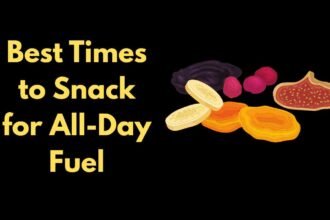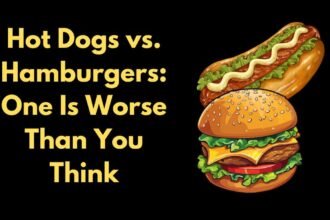A lot of people are always looking for good ways to stay healthy and lose weight in today’s busy world. There are many fad diets and products out there that claim to help you lose weight. But one simple, natural nutrient has stood the test of time: fibre.
To be more specific, soluble dietary fibre has been shown to help control hunger, lower calorie intake, and improve metabolic health in general.
A recent systematic review and meta-analysis of randomised controlled studies (RCTs) looked at how soluble fibre affects weight management, hunger, and the number of calories you eat.
Let’s talk about what this means and how you can use it to reach your health goals without having to follow a strict diet or buy expensive goods.
What Is Soluble Fiber?
When you mix soluble fibre with water, it turns into a gel-like substance in your digestive system. It can be found in some veggies, fruits (like apples and citrus), oats, and beans.
Food goes more slowly through your gut when you use this gel. This makes you feel fuller for longer.
Fiber and Weight Loss: What Science Says
The meta-analysis in the journal Foods says that researchers looked at 15 randomised controlled trials with healthy adults as subjects.
They were interested in whether or not different kinds of soluble fibre can really make people eat less and feel fuller.
Here’s what they found:
- Guar gum had the largest impact on reducing calorie intake. A dose as small as 5 grams mixed into milk significantly cut the amount of food people ate afterward.
- β-glucan (found in oats and barley) also showed a moderate ability to reduce calorie intake, especially when consumed in beverages.
- Alginate, a fiber from brown seaweed, worked well in both liquid and solid food forms (like cookies), especially when taken in higher doses (9g).
- Polydextrose, a synthetic fiber often added to drinks and puddings, showed small but significant results—especially at higher doses (25g).
- Pectin, a fiber found in fruits, had the weakest effects, with small reductions in appetite and food intake that weren’t always statistically significant.
Why Fiber Helps With Fat Burning
In the usual sense, fibre doesn’t “burn fat.” Like coffee might, it doesn’t speed up your metabolism. It does help in some ways, though:
1. Makes You Feel Full Longer
Fibre slows down processing and makes you feel full when it turns into a gel in your stomach. This makes it less likely that you’ll eat too much or snack in between meals.
2. Reduces Calorie Intake Without You Noticing
People who ate soluble fibre automatically ate fewer calories, and most of the time they didn’t even realise it.
3. Stabilizes Blood Sugar Levels
Soluble fibre makes it take longer for the body to absorb sugar, which helps keep blood sugar from going up and down too quickly. This may help your body burn fat faster over time and control your cravings.
4. Feeds Your Good Gut Bacteria
Short-chain fatty acids (SCFAs) like propionate are made when certain types of soluble fibre are fermented in the gut. These SCFAs help control hunger hormones like PYY and GLP-1, which tell your brain it’s time to stop eating.
Best Types of Fiber for Weight Loss (According to Science)
Based on the analyzed studies, here’s how the different fibers ranked for reducing energy (calorie) intake:
| Fiber Type | Best Dose | Food Form | Effect on Calorie Intake |
|---|---|---|---|
| Guar Gum | 5g | Milk (liquid) | Large, significant reduction |
| β-glucan | 3g | Beverage | Moderate reduction |
| Alginate | 9g | Cookies (solid) | Medium reduction |
| Polydextrose | 25g | Beverage | Small but significant |
| Pectin | 10g | Beverage | Small or non-significant |
👉 Pro Tip: When fibre is added to liquid meals (like shakes or drinks), they work better than solid foods like cookies or rice. This is especially true for fibres like guar gum and β-glucan.
Fiber Timing and Dosage Tips
- Start with small doses (2–5g) and increase gradually. This helps your digestive system adjust and reduces side effects like bloating or gas.
- Consume fiber 30–60 minutes before a meal to help reduce your hunger.
- Drink plenty of water—fiber needs water to work effectively.
Soluble Fiber and Appetite Hormones
Some fibres, like β-glucan and polydextrose, can make hunger-suppressing hormones (PYY, GLP-1, and CCK) come out.
These chemicals let your brain know that you’ve had enough to eat, which makes you less hungry in the future.
In one study, these hormones were much higher in high-viscosity β-glucan drinks than in lower-viscosity drinks.
That means it’s not just the amount of fiber-rich foods or drinks that matters, but also how they feel and how thick they are.
The Gut Connection
It feeds the good bacteria in your gut, which is called a prebiotic affect. A balanced gut microbiome has been linked to better digestion, less inflammation, and better weight control.
SCFAs, which are made when fibre ferments, also help keep the metabolism in check, lower inflammation, and may help protect against diseases linked to fat.
Real-World Application: How to Add Fiber to Your Diet
You don’t need supplements to get these benefits. Here are simple food swaps you can make:
| Regular Food | High-Fiber Alternative |
|---|---|
| White bread | Whole grain or oat bread |
| Sugary cereal | Oatmeal with fruit |
| Juice | A whole orange or apple |
| White rice | Barley or quinoa |
| Potato chips | Air-popped popcorn or roasted chickpeas |
Final Thoughts: Does Fiber Help You Burn Fat?
If you work out, you might “burn” fat directly, but fibre is a big part of controlling your hunger, cutting calories, and keeping your metabolism healthy.
Because it makes you feel full, keeps your blood sugar steady, and feeds the good bacteria in your gut, soluble fibre helps your body lose fat naturally.
The best part? Adding fiber-rich drinks or whole foods to your daily routine is a simple way to do it.
When you plan your meals from now on, don’t just think about calories; also think about fibre. It does not take much to make a difference.
Focus on eating more soluble fibre if you want to lose weight without stress or going without food. One of the easiest things you can do that is also backed by science. Your body (and stomach) will thank you for it.




